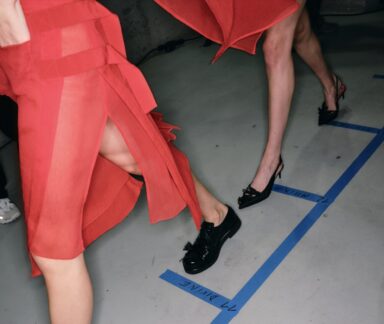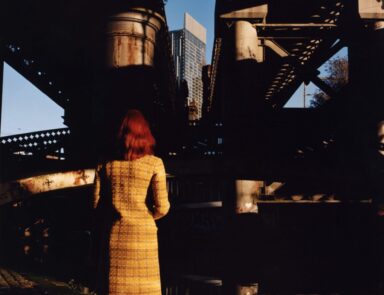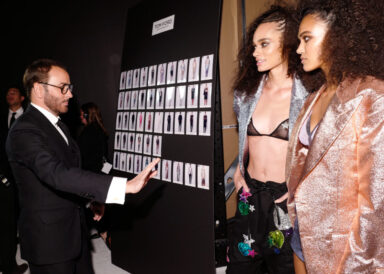Presented in collaboration with the Costume Institute at the Metropolitan Museum of New York, An Anthology of Fashion is the second portion of a two-part exhibition exploring fashion in the United States. The exhibition examines the creativity of designers in the U.S. during the nineteenth century through the final decades of the twentieth century, bringing out names heretofore considered only “in the footnotes”
Words: Domenico Costantini
The Metropolitan Museum of Art’s Costume Institute presented In America: An Anthology of Fashion, the second chapter of the two-part exhibition on American fashion preceded by In America: A Lexicon of Fashion.
The theme of this year’s Met Gala was Gilded Glamour.
Gilded Glamour is a reference to America’s Gilded Age, the period of rapid industrialization and massive economic growth during the three or so decades leading up to the turn of the century. This era also saw the end of Reconstruction in 1877, prohibiting many black Americans from participating in or benefiting from the economic boom. (The era took its name from Mark Twain and Charles Dudley Warner’s 1873 novel The Gilded Age: A Tale of Today, a satire of post-Civil War America and its rising industrial class.)
If the first installment of the exhibition focuses more on contemporary designers and the creation of what Bolton calls a fashion vocabulary. The second aims to provide crucial historical context, it also seeks to find untold stories and overlooked figures in early American fashion, especially female designers, and especially those of color. Many of their stories, Bolton said in announcing the exhibit, “have been forgotten, overlooked or relegated to a footnote in the annals of fashion history.”
A number of filmmakers were chosen to enliven the narrative with their different aesthetics. Tom Ford, Radha Blank, Janicza Bravo, Sofia Coppola, Julie Dash, Regina King, Autumn de Wilde and last year’s Oscar winner Chloe Zhao.
For Regina King, the Richmond Room, depicting early 19th-century domestic life for wealthy Virginians, provided a chance to highlight Black designer Fannie Criss Payne, who was born in the late 1860s to formerly enslaved parents and became a top local dressmaker. She was known for stitching a name tape into her garments to “sign” her work — part of an emerging sense of clothes-making as a creative endeavor. Regina says she was looking “to portray the power and strength Fannie Criss Payne exudes through her awe-inspiring story and exquisite clothing,” placing her in a prosperous working situation — and proudly wearing her own design — fitting a client, and employing another Black woman as a seamstress.
Filmmaker Radha Blank focuses at Maria Hollander, founder of a clothing business in the mid-19th century in Massachusetts who used her business success to advocate for abolition and women’s rights. In the museum’s Shaker Retiring Room, director Chloè Zhao connects with the minimalist aesthetic of 1930s sportswear designer Claire McCardell.
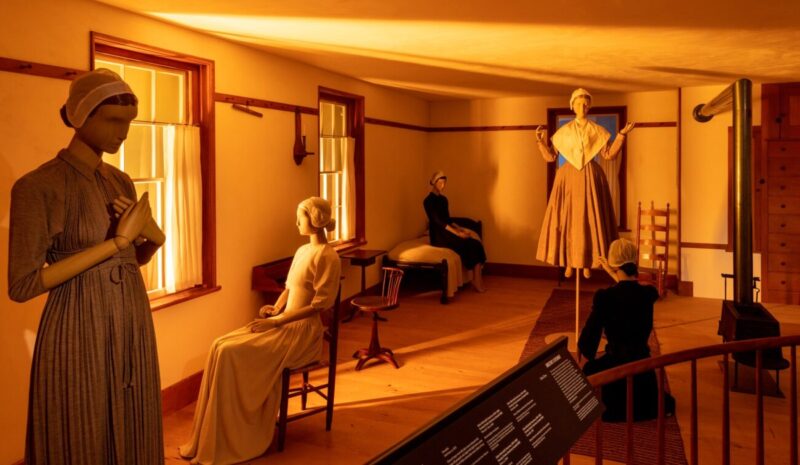
Autumn de Wilde uses her set in the Baltimore Dining Room to examine the influence of European fashion on American women — including some disapproving American attitudes about those low-cut gowns from Paris.
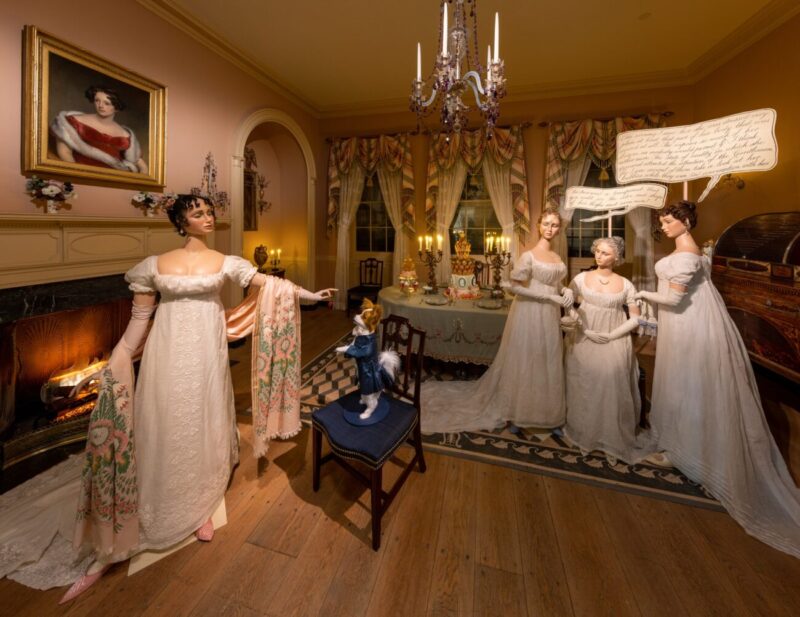
Julie Dash looks on Black dressmaker Ann Lowe, who designed future first lady Jackie Kennedy’s wedding dress but was barely recognized for it.
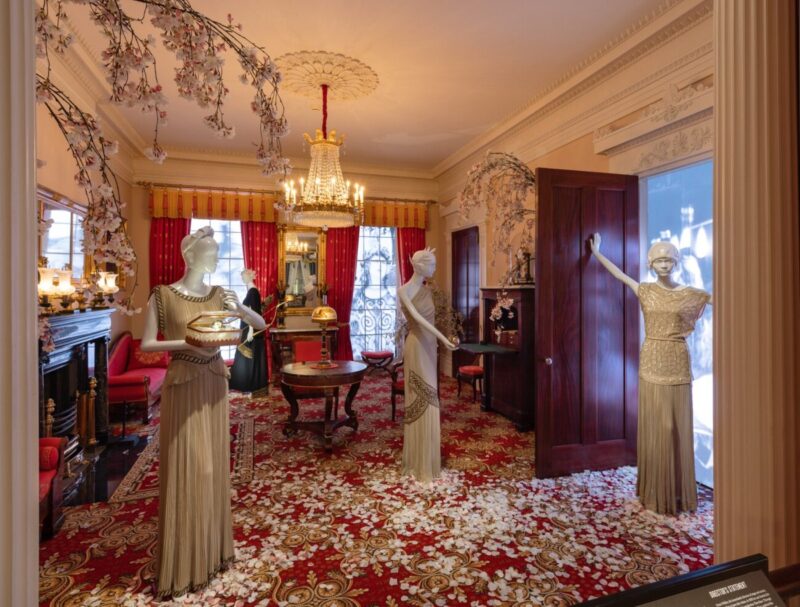
In the wing’s Gothic Revival Library, Janicza Bravo looks at the works of Elizabeth Hawes, a mid-20th century designer and fashion writer.
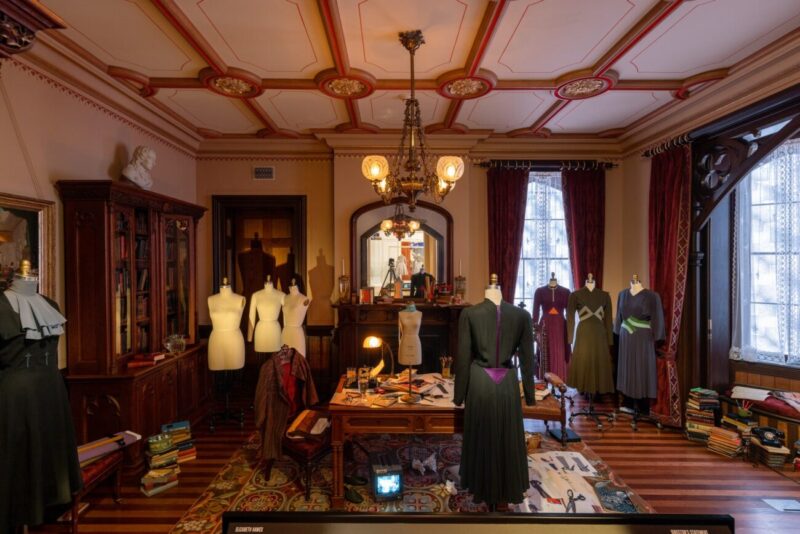
And Sofia Coppola, given the McKim, Mead & White Stair Hall and another room, the filmmaker had the mannequins’ faces molded and painted by her artist friends Rachel Feinstein and John Currin, lending a vaguely trivial feel to their elegant poses and Gilded Age clothing.
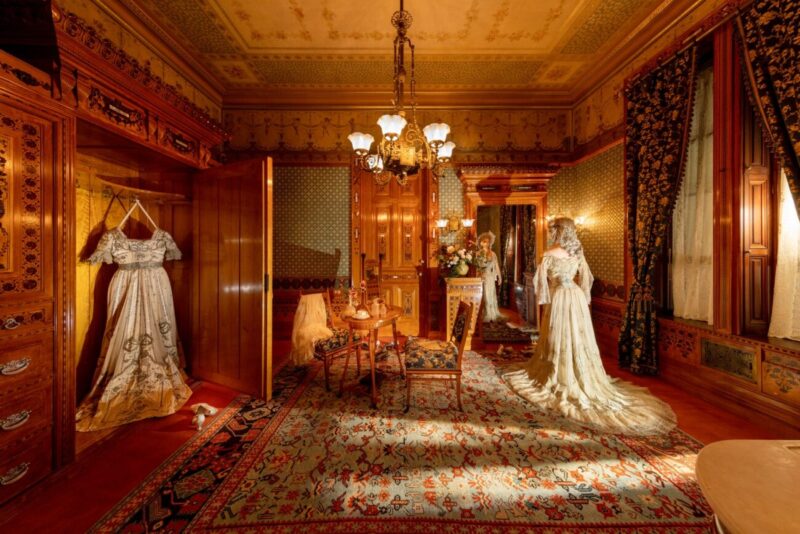
Tom Ford transforms the circular room of Versailles painted by — John Vanderlyn between 1818 and 1819 room into a depiction of the “Battle of Versailles” — not a military conflict but the name given to a major night for American fashion in 1973, when five American sportswear designers tackled against five French couture designers at a show in Versailles and showed the world what American fashion was made of.
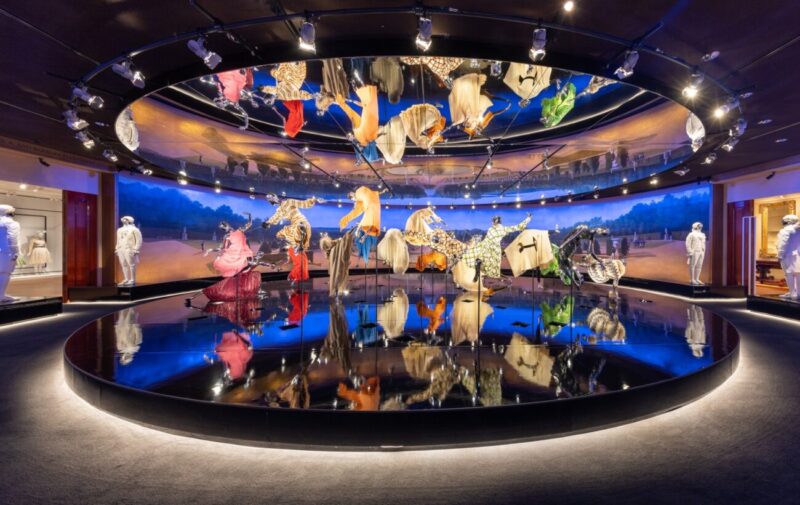
“In America: An Anthology of Fashion” opens to the public May 7. Part one, “In America: A Lexicon of Fashion,” remains open at the Anna Wintour Costume Center.
